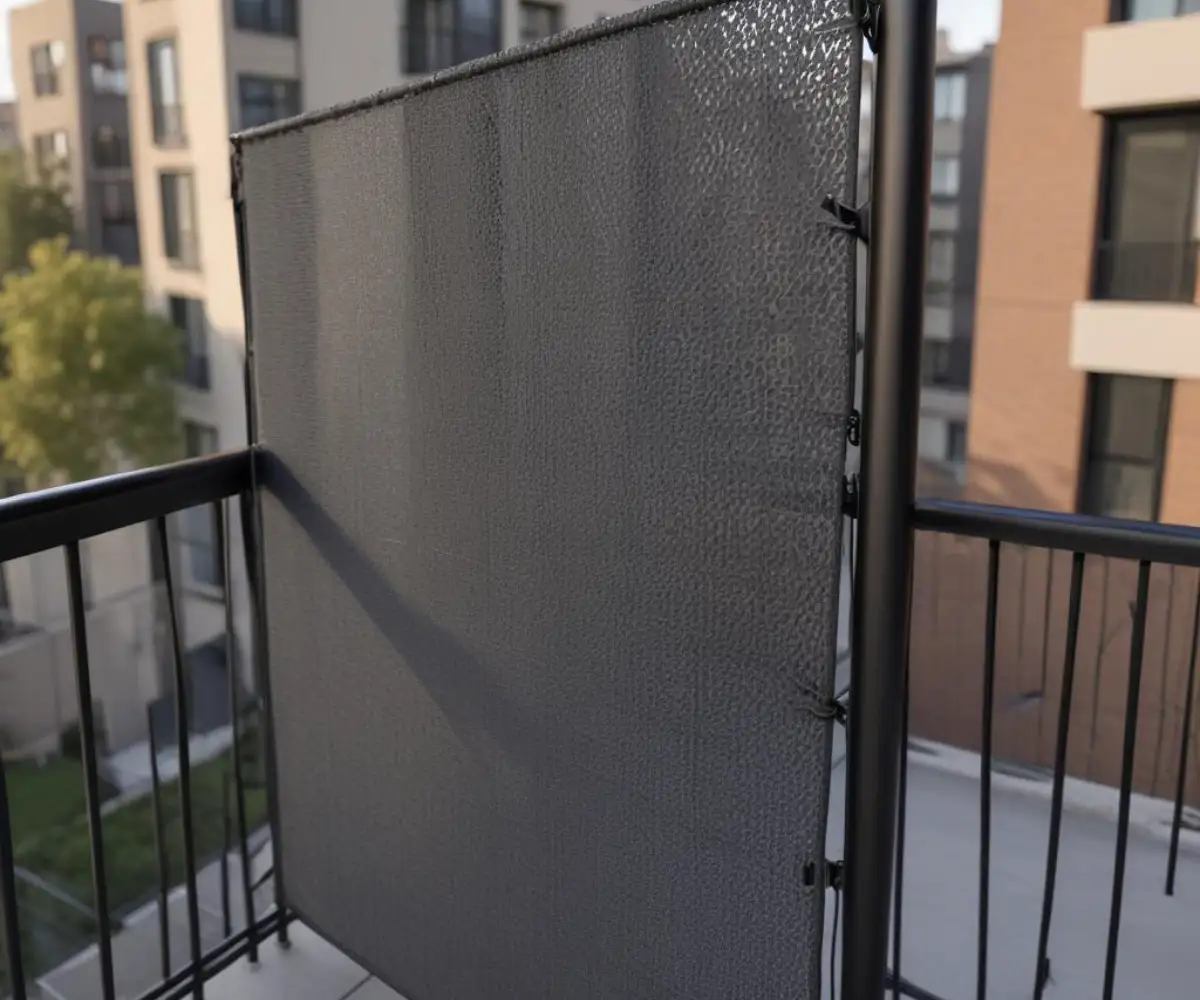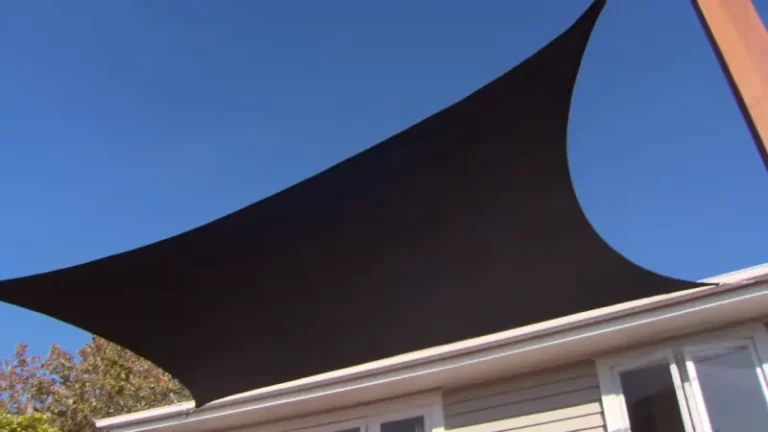Screen In Apartment Patio: The Ultimate Guide to Reclaiming Your Outdoor Space
Transform your apartment patio into a private sanctuary with ease. Installing a screen is a quick, cost-effective way to enhance your outdoor space. Imagine enjoying fresh air without the prying eyes of neighbors—sounds great, right?
With the right materials and a simple, secure installation method, you can create a comfortable, stylish retreat in just a few hours. This project not only boosts your patio’s function but also its visual appeal, making it an investment you’ll enjoy daily. Ready to turn your patio into a peaceful oasis? Let’s get started!
You'll Learn About
The Problem: Your Patio Feels More Like a Stage
Living in an apartment offers convenience, but the trade-off is often privacy. Your patio or balcony, intended as a private retreat, can feel more like a public stage, constantly overlooked by neighbors across the way or visible from the street below. This lack of seclusion prevents you from truly enjoying your outdoor space.
This constant feeling of being watched can be uncomfortable. It might stop you from relaxing with a morning coffee, enjoying a quiet dinner, or simply reading a book in peace. The solution is simpler and more affordable than you might think: a well-chosen and properly installed screen.
Why Your Outdoor Space Lacks Privacy and Comfort
The design of many apartment buildings prioritizes density, placing balconies and patios in close proximity. This architectural choice is the primary reason for the lack of privacy. You are not just dealing with direct lines of sight from adjacent units, but also from buildings across the courtyard or street.
Beyond prying eyes, an unscreened patio is fully exposed to the elements. Relentless sun can make the space unusable during certain hours and fade your outdoor furniture. Wind can turn a pleasant evening into a frustrating one, knocking over items and creating a constant draft.
First Things First: Check Your Lease and HOA Rules
Before you buy any materials, your very first step is to consult your lease agreement and any Homeowners Association (HOA) or building management rules. Ignoring this critical step can lead to fines or being forced to remove your installation. Look for specific clauses regarding exterior modifications, decorations, and attachments to railings or walls.
Many agreements have strict rules to maintain the building’s uniform appearance. Common restrictions include prohibitions on drilling into railings or walls, limitations on screen colors (often neutral tones are required), and specifications on approved materials. If the rules are unclear, a quick email to your property manager for clarification can save you significant trouble later.
Choosing the Best Screen for Your Apartment Patio
Selecting the right material is a balance of privacy needs, aesthetic preference, durability, and your building’s rules. Each option offers a different set of benefits and drawbacks. Understanding these differences is key to making a choice you will be happy with for years to come.
Consider your primary goal. Are you seeking maximum privacy, gentle light filtering, or a decorative backdrop? Your answer will guide you toward the perfect material for your personal oasis. Here is a breakdown of the most popular and effective options available.

Comparing Your Patio Screen Options
The variety of screening materials can be overwhelming. This table breaks down the key features of the most common choices to help you decide which is best suited for your specific needs and apartment regulations.
| Material Type | Privacy Level | Installation Ease | Weather Resistance | Typical Cost |
|---|---|---|---|---|
| HDPE Mesh Fabric | Good to Excellent (85-95% blockage) | Very Easy (Zip ties) | High (UV and water resistant) | $ |
| Bamboo/Reed Fencing | Excellent (Varies by density) | Moderate (Requires wire or ties) | Low to Medium (Can degrade in rain) | $$ |
| Artificial Faux Ivy | Excellent (Solid backing) | Easy (Snaps or ties together) | Medium (UV protection varies) | $$$ |
| Outdoor Curtains | Adjustable (Open or closed) | Moderate (Requires a rod) | Medium (Must be weather-resistant fabric) | $$ |
HDPE Fabric Screens: The Versatile Standard
High-Density Polyethylene (HDPE) is one of the most popular choices for a reason. This woven mesh fabric provides significant privacy while still allowing for airflow, which is crucial for preventing a “sail effect” in high winds. It is lightweight, durable, and resistant to UV rays, mold, and mildew.
These screens typically come with reinforced hems and metal grommets spaced every 18-24 inches. This construction makes installation incredibly simple, usually requiring nothing more than zip ties or bungee cords to attach securely to your existing patio railings.
Bamboo and Reed Fencing: For a Natural Look
If you prefer a more organic, rustic aesthetic, bamboo or reed fencing is an excellent choice. These screens are made from natural materials and provide a high level of privacy and a warm, earthy feel. They can instantly transform a sterile balcony into a tropical-inspired retreat.
Installation can be slightly more involved than with mesh screens, often requiring sturdy wire to lash the fencing to your railings. Be aware that natural materials are more susceptible to weather, and they may fade or become brittle over time, especially in very wet or sunny climates.
Artificial Greenery Panels: Maintenance-Free Green
For those who love the look of a living wall without the maintenance, artificial faux ivy or boxwood panels are a fantastic solution. These panels snap together to create a lush, green privacy screen that offers nearly 100% visual blockage. They add a vibrant touch of color and texture to your outdoor space.
When shopping for these, pay close attention to the quality. Higher-end panels offer better UV protection to resist fading and a more realistic appearance. Poor quality versions can look plasticky and may not hold up well to the elements.
Damage-Free Installation: A Renter’s Guide
The biggest challenge for apartment dwellers is installing a screen without causing damage. Drilling holes is almost always forbidden and can result in the loss of your security deposit. Fortunately, there are many effective and secure methods that require no drilling at all.
These temporary solutions are strong enough to hold your screen in place securely through various weather conditions but can be removed without a trace when you move out. Always prioritize a secure fit to ensure your screen does not become a hazard in strong winds.
Mastering the Zip Tie Method
The zip tie is the renter’s best friend. For mesh screens with grommets, this is the most secure and straightforward installation method. Use heavy-duty, UV-resistant zip ties to ensure they do not become brittle and break in the sun.
Start by attaching the top corners of the screen to your railing, pulling it taut as you go. Work your way across the top, placing a zip tie through every grommet. Then, secure the sides and bottom, ensuring the screen is smooth and wrinkle-free for a professional look.
Using Tension Rods and Freestanding Frames
For balconies with walls on either side, a heavy-duty outdoor tension rod can be used to hang outdoor curtains or a lighter-weight screen. This method creates a soft, elegant look and allows you to easily open and close the screen as needed. Ensure the rod is rated for outdoor use to prevent rust.
Another excellent no-drill option is a freestanding or retractable screen. These units stand on their own and do not need to be attached to the building structure. While they are a more significant investment, they offer unparalleled flexibility and are perfect for renters.
Beyond Privacy: The Hidden Perks of a Patio Screen
While privacy is the primary motivator for most people, installing a screen comes with a host of other benefits that enhance the comfort and usability of your patio. These advantages work together to create a true outdoor extension of your living space.
From weather protection to improved aesthetics, a screen is a multi-functional upgrade. It can fundamentally change how you use and enjoy your little slice of the outdoors.
Wind and Sun Protection
A properly installed screen acts as a windbreak, making your patio a calmer, more pleasant place to be. This is especially beneficial for high-rise apartments where wind can be a constant issue. It also provides a welcome barrier from the harsh afternoon sun.
Many fabric screens are rated to block up to 95% of harmful UV rays. This not only protects you and your family but also extends the life of your outdoor furniture, rugs, and decor by preventing sun-induced fading and degradation.
Creating a Decorator’s Backdrop
Think of your new screen as a blank canvas. It covers up an uninspired railing or a less-than-scenic view, providing a uniform backdrop for your design vision. You can hang outdoor string lights, attach small planters, or display weather-resistant art to personalize the space.
This added layer of design potential helps make the patio feel like a thoughtfully decorated room. It’s an opportunity to express your style and create a cohesive look that complements your indoor decor, especially important if you have large glass doors or windows. Sometimes, the condition of adjoining walls can be a concern for your project. Minor issues, like discovering pin holes in drywall on an exterior-facing wall, should be addressed to maintain integrity.
Keeping Your Screen in Top Condition
Proper maintenance will ensure your screen looks great and lasts for several seasons. The cleaning method depends on the material. For most fabric and artificial greenery screens, a simple spray with a hose is enough to remove dust and pollen. For more stubborn dirt, use a soft brush and a mild soap solution, then rinse thoroughly.
Periodically check your attachments, especially after a storm or high winds. Tighten any loose zip ties or wires to keep the screen secure. If you live in an area with harsh winters, consider taking your screen down and storing it to prevent damage from snow and ice.
Common Mistakes to Avoid at All Costs
A few common errors can turn your simple DIY project into a major headache. The most frequent mistake is inaccurate measuring. Always measure the height and length of your railing multiple times before ordering a screen to ensure a perfect, taut fit. A screen that is too large will sag, while one that is too small will leave gaps.
Another critical error is underestimating wind load. You must secure your screen at every possible point. Using too few zip ties or a weak attachment method can cause the screen to tear or, in a worst-case scenario, detach from the railing completely. Finally, always double-check those building rules one last time before you begin installation.
Take Back Your Patio This Weekend
Installing a screen on your apartment patio is a high-impact, low-cost project that can dramatically improve your quality of life. It transforms an exposed, underused area into a private, comfortable, and stylish outdoor oasis. By choosing the right material and using a secure, damage-free installation method, you can create a space you will love to use.
With a little planning, you can complete this entire project in a single afternoon. Reclaim your outdoor space and start enjoying the fresh air and relaxation you deserve, free from the view of your neighbors. This simple upgrade is one of the best investments you can make in your apartment living experience, enhancing both its function and its visual appeal in line with your other home improvements. Much like keeping an eye out for when major components like windows need attention, as seen with issues like the Pella 350 series being discontinued, proactive upgrades make a difference.

